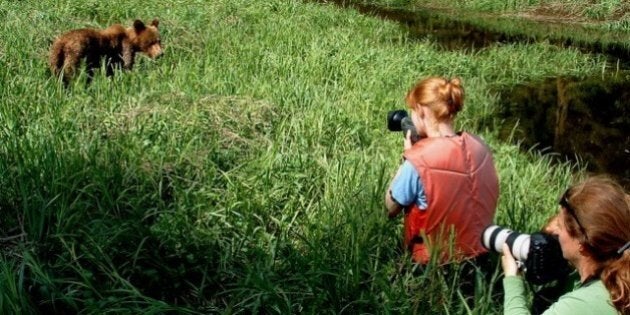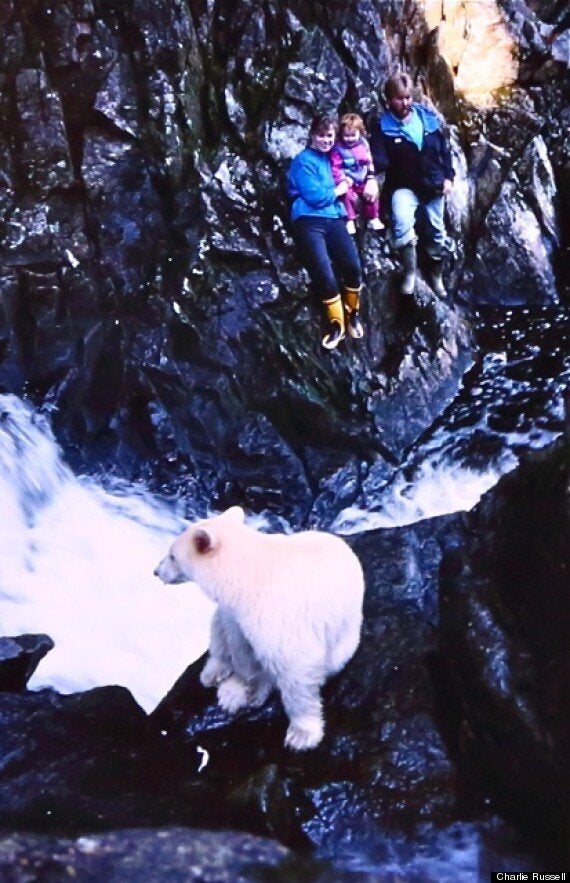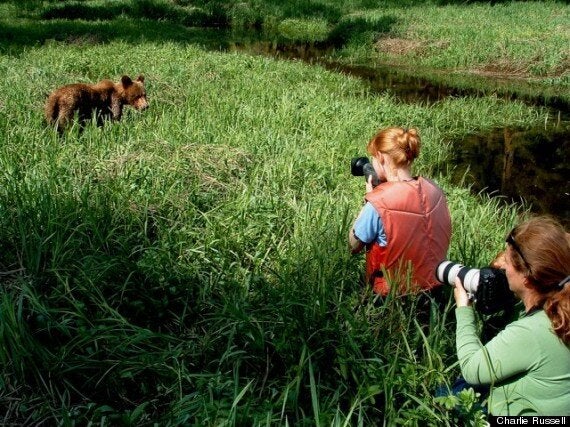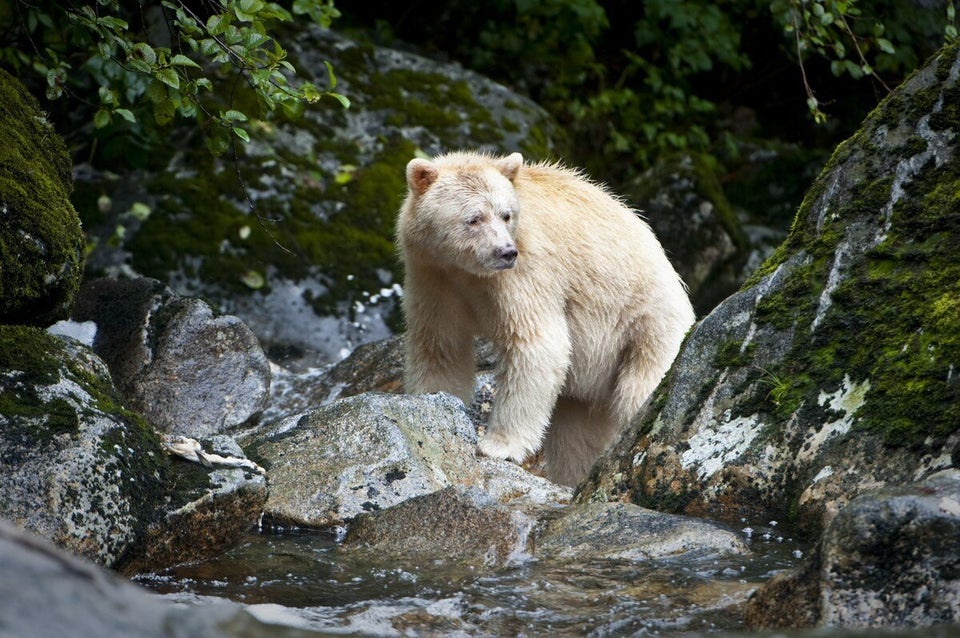
People ask me a lot why I stepped into the fight against bear trophy hunting (that is, killing bears for pleasure, then taking the head or paws as a "trophy").
There is a stereotype about the sort of people who care about bears. They are made out to be sensitive city folk who can't stomach the realities of life in the rest of B.C. "We must save those poor bears!" the Vancouverite exclaims over his $5 soy latte, having never seen a bear in his life, having no comprehension that small town B.C. is simply crawling with bears in need of firm government control.
That's the stereotype anyway.
My story is not that simple. I live in Vancouver today, only a stones-throw from the urban thoroughfare of Granville Street, but I grew up outside a town of only 200 people, and spent large swaths of my childhood in the remote wilderness.
I've seen many hundreds of bears in my life. Grizzly bears grazing in the grassy foothills of the Rocky Mountains, mysterious white spirit bears slipping through the lush mossy trees of the Great Bear Rainforest, and curious black bears wandering across our lawn or climbing trees when spooked by our family's Jack Russell terrier.
Bears to me are neighbours. They are not to be pitied and cooed over, not to be feared and warped into the hunter's bogeyman. They are simply forces of nature. To see a grizzly bear in close proximity is to witness something so beautiful, so much a part of the landscape, that you can't help but think, "This animal belongs here." They are like the soul of the Earth made animate.
So how did I come to know bears this well?
My parents, Jeff and Sue Turner, are wildlife documentary filmmakers, and one of their life-long passions is filming bears. When I was born, rather then settling down to raise me in a traditional home, they took me along on a two-year filming trip into the heart of the Great Bear Rainforest.

Watching a spirit bear at age two with my parents Jeff and Sue Turner on Princess Royal Island. (Photo: Charlie Russell)
I spent my first years of life crawling and toddling on the mossy forest floor beneath old-growth giants, and sleeping at night in a soft canvas wall tent. (My parents say I was stunned, upon returning to civilization, by such things as walls that didn't move, and flushing toilets.) It's hard to say how many black bears and spirit bears I would have seen during our time in the rainforest, but it was probably close to 100.
From that trip onwards, I traveled with my parents everywhere they went filming, and so did my brother when he was born three years later. Wolves, caribou, bison, cougars, wolverines, muskoxen -- of all the amazing creatures we saw and filmed, bears where always my favourite.
Now, I am 22 years old, and work with my parents (in a more formal capacity) to produce nature films for the CBC. I will be returning again to the central coast of B.C. this spring in search of bears to film.
How can I spend time in the company of these animals, get to know them as individuals, and allow them to become at ease in my presence... knowing that the very next day trophy hunters could arrive and kill them? How can I look into the eyes of a bear and witness the intelligence and personality looking back at me, and then abandon that creature to fate? That's when I decided to join in the fight.
It sickens me that the discussion about bear trophy-hunting in B.C. becomes reduced to such threadbare rhetoric. Ministers stick to a handful of worn-out talking points that strain for credibility. The hunt is managed using the "best available science", Minister of Forests, Lands and Natural Resource Steve Thomson says, refusing to look at the peer-reviewed articles by some of B.C.'s most eminent scientists that state otherwise. (The study Confronting Uncertainty in Wildlife Management, published by the Public Library of Science, is one recent example.)
Hunt regulations are both "strict and cautious," B.C. MLA Michelle Stilwell writes to a concerned constituent, apparently unaware that over the last decade, grizzlies have been overkilled by hunters in every single region of the province.

Filming a grizzly bear in the Khutzeymateen Grizzly Bear Sanctuary, age fourteen, alongside my mother Sue Turner. (Photo: Charlie Russell)
To myself, and many others, there is more than enough evidence to say that the trophy hunt is not well managed in B.C., nor is it managed based on the minister's choice phrase -- "the best available science."
But even if it were... Even if rigorous on-the-ground population studies were finally undertaken, even if there was a new task force of fish and wildlife officers to enforce hunting regulations and prevent poaching, for me, it would be a small consolation to know that a bear's life was taken just because it was deemed biologically expendable by a government scientist.
Is a bear's life really just a number in the ledger? A dot on the chart?
What we are talking about here is death, violent death, for the sake of slaking a human being's bloodlust. The desire to slaughter a large, sentient creature for no purpose other than pleasure.
If you've ever watched a video of a bear being shot, you will know how horrific an act it is. The bear's eyes widen and the head rears back in what can only be described as complete shock, as the first bullet rips through its thigh or shoulder. It tries to run, then another bullet hits. The terror of imminent death sets in.
Sometimes the bear spins and jerks wildly, almost dancing, in a delirium of fear and agony. Then another bullet. And another. Til at last the body crumples and stills, the torture abates. But the crime is not yet over. The hunter now claims his or her prize.
First, there is the victory photo, usually posed with a foot on the bear, holding the high-power, long-range rifle they used to so bravely slaughter it. Then, the knife comes out and the still-warm head and paws are sliced off and dropped into plastic bags as heavy, bloody souvenirs.
I used to consider science, economics and public opinion polls to be my friends in the fight against bear trophy hunting. I saw the peer-reviewed journals, the economic studies, and the well-respected surveys showing that 88 per cent of British Columbians were against trophy hunting, and I became bright-eyed with hope.
"Wow!" I thought, "With all this evidence, all this expert opinion and public support, the government can't possibly ignore us."
But ignore us they continue to do. So I say, screw the numbers. Let's put the blood back in this fight. Because once you've actually seen a bear killed, you don't care as much about the statistics, the studies.
Once you've seen a beautiful, intelligent, expressive animal riddled with bullets and butchered for the macho hedonism of an American or European death-tourist, you don't need to see anything else to know that it's wrong.
ALSO ON HUFFPOST:
